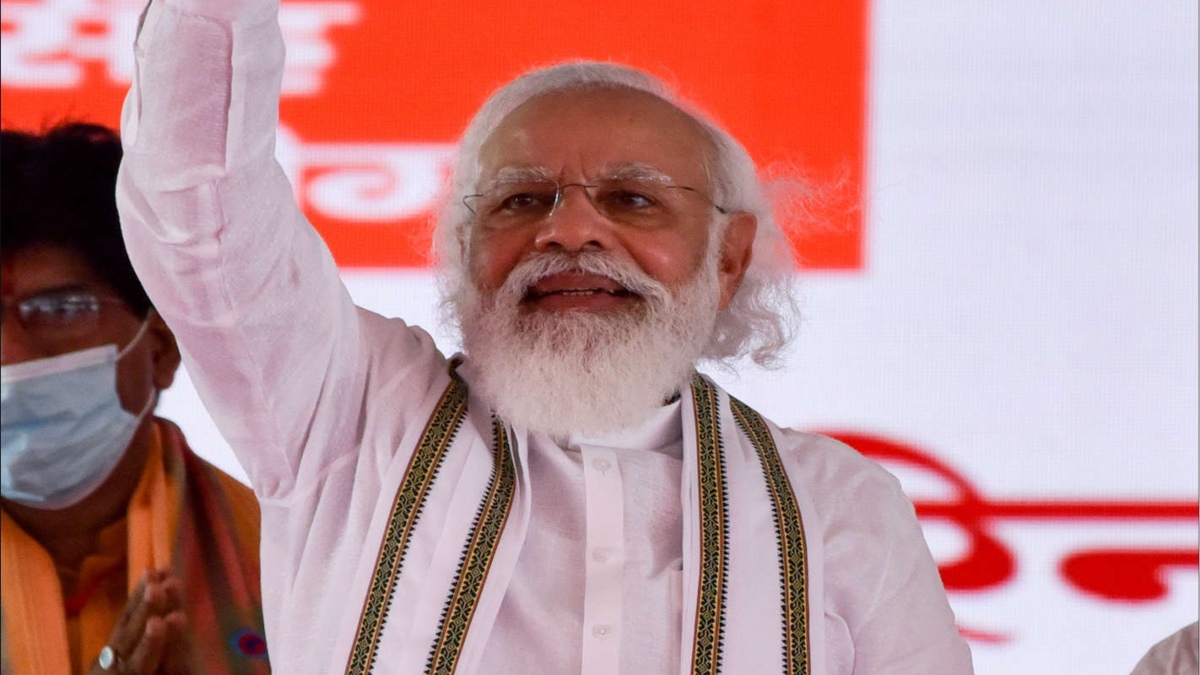


Twenty years ago when Narendra Modi became the chief minister of Gujarat, there was hardly anyone who thought then that his leadership would make him not only one of the most successful Prime Ministers of India but also a global icon. Yet he is Modi who made all the difference, courtesy to his charisma and political will with a noble vision.
As he completes two decades of a non-stop stint as an able and longest-serving administrator at the age of 71 today, his public life has already made a history which none of his predecessors could match as PM in their lifetime and which only resembles that of former US President Bill Clinton.
The last time Modi celebrated his birthday without heading a government was in September of 2001. Since October of that year when he was administered the oath of the office of the Chief Minister of Gujarat, he has been chairing an elected government for 7285 days without any break which beats the record of the first PM Jawaharlal Nehru and his daughter Indira Gandhi who served as the head of a government for 6,130 days and 5829 days respectively.
In comparison, Dr Manmohan Singh who was the immediate predecessor of PM Modi on two consecutive terms during the UPA rule worked for 3656 days. Within the BJP, Modi has also been the most successful figure as a CM or PM. This has made him dependable, with huge mass acceptability, to his party in any election anywhere as he has the experience of leading a state government and is blessed with the art of campaigning.
Riding on the crest of the Modi wave the BJP came to power at the Centre with a majority in 2014. It also ousted the Left from power in Tripura which was once considered a Red Bastion over three decades and grew significantly in other North-Eastern states during the last seven years.
Further, PM Modi has scored many firsts as the PM. At the Republic Day parade of 2015, he invited Barack Obama, the then US President as the chief guest before becoming the first Indian PM to visit Israel in July of 2017. He is the first PM who met three consecutive US Presidents including Donald Trump whom he hosted in India and met Joe Biden at the White House recently.
Modi is also the first PM to have invited SAARC heads of government to his swearing-in ceremony after his maiden rise as the head of the state in 2014. In August this year, he again became the first Indian PM to chair a UN Security Council meeting. From getting featured in the latest edition of Time’s Magazine among the 100 most influential people in 2021 to topping popularity charts regularly, Modi has been a star attraction that seems unbreakable.
In a recent survey by the Morning Consult agency, he received the highest approval rating among the 13 top global leaders which no other Indian PM has ever achieved. On social media platforms, the Indian PM remains the most followed active politician in the world with over 177 million followers on Twitter, Facebook and Instagram combined.
The height of popularity however could not sweep him away from his governance. With iron hands, PM Modi dealt with the pandemic which is yet to be over and has been able to contain its spread both in the country and beyond successfully by implementing a global vaccination programme.
He also ensured one of the biggest repatriations of the Indians from abroad after they got stuck overseas due to a worldwide shutdown in the wake of the pandemic. This is a rare and unparalleled feat that has put him above in comparison to the past PMs.
Only last month PM Modi again displayed his visionary leadership in foreign affairs when the matter was concerned with China and Afghanistan, which have become a dangerous combination at the mediation of Pakistan in the Indian subcontinent. He sent out strong messages to each of the three neighbouring countries urging them for regional peace and stability.
The author works as a professor at Arunachal University of Studies, Namsai and is the founder of the Centre for Narendra Modi Studies. He is also a former media advisor of Aligarh Muslim University and can be reached at profjasimmd@gmail.com. The views expressed are personal.